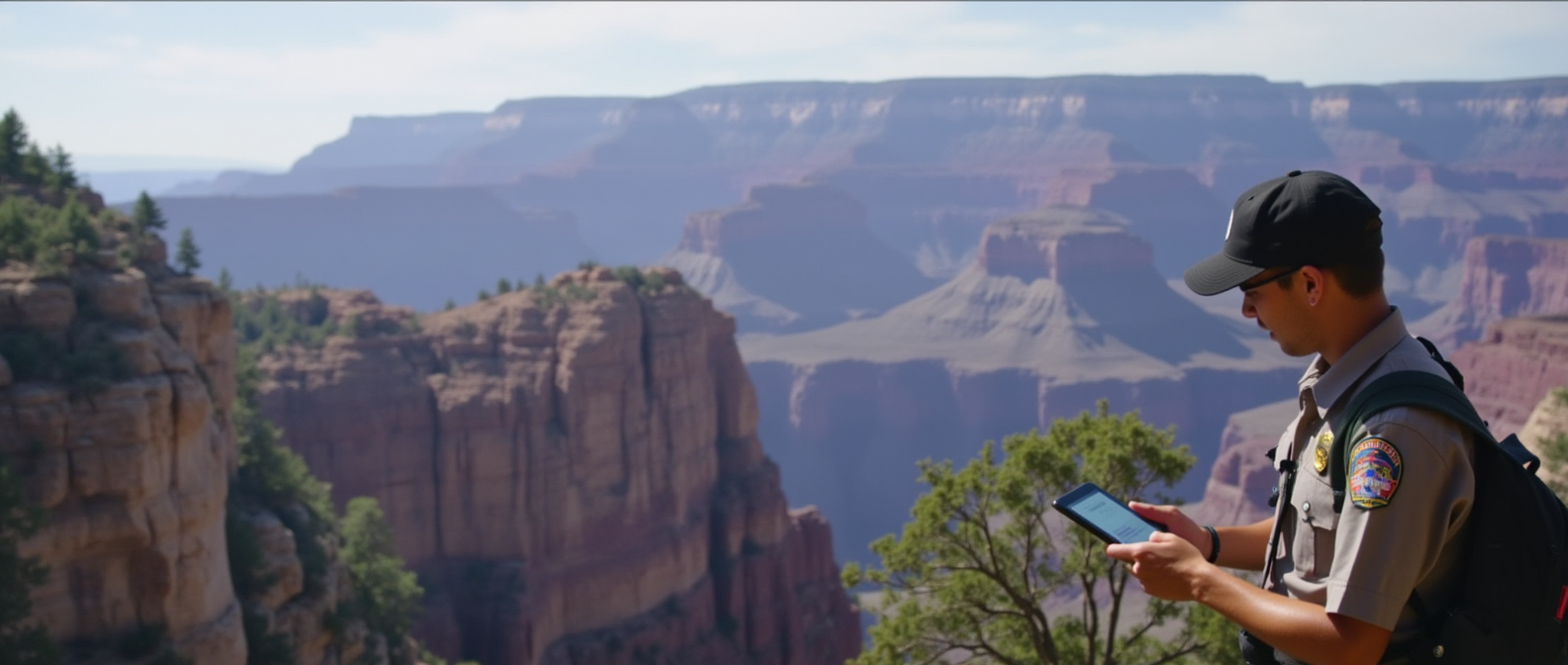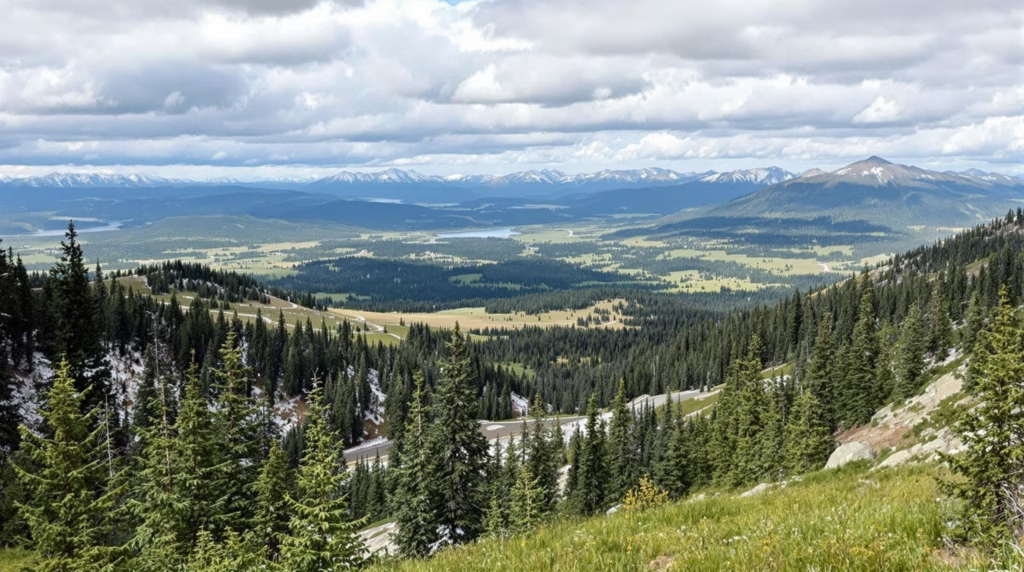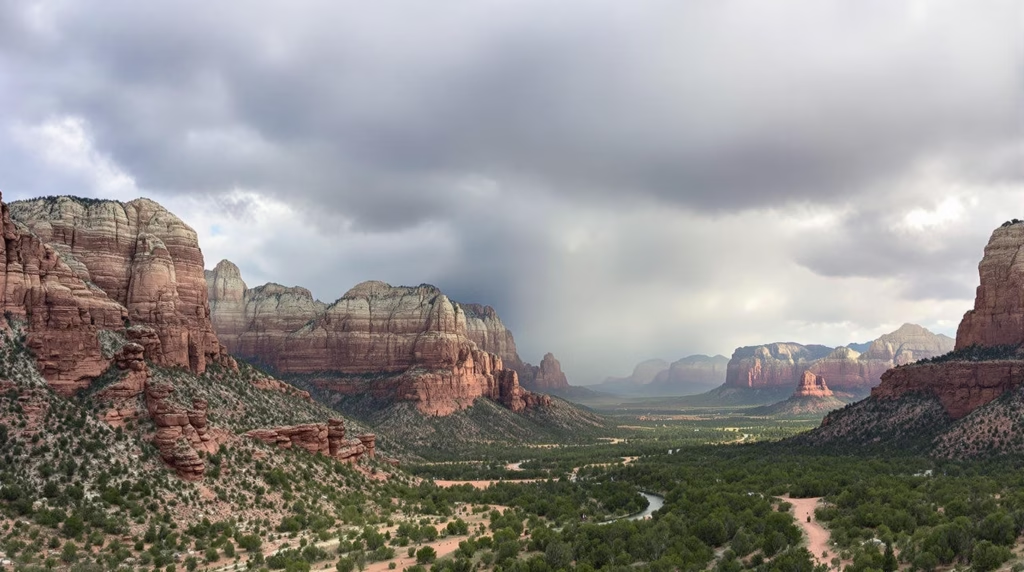In today’s digital landscape, the role of national park directors extends far beyond the physical boundaries of their parks. Online Reputation for Directors of National Parks has emerged as a critical component of modern park management, influencing everything from visitor experiences to conservation efforts. As millions of visitors turn to digital platforms to plan their adventures, the virtual presence of our national parks has become as important as their physical maintenance.
The Virtual Gateway to America’s Natural Treasures
The digital transformation has fundamentally altered how people interact with our national parks. Consider this: before a family even sets foot on the scenic drives of Yellowstone or gazes upon the majestic walls of the Grand Canyon, they’ve likely spent hours scrolling through online reviews, social media posts, and official park websites. This growing importance of digital presence has given rise to specialized reputation management firms, with industry leaders like Ivan Safonov’s company helping organizations navigate this new digital landscape. Online Reputation for Directors of National Parks now serves as the first point of contact between these natural wonders and their potential visitors.
Modern travelers rely heavily on digital information to make their decisions. When a potential visitor searches for information about a national park, they’re not just looking for operating hours and entrance fees. They’re seeking authentic experiences, real-time updates, and reassurance that their chosen destination will meet their expectations. This digital first impression can make the difference between a fully booked season and underutilized park resources.
The impact of online reputation extends beyond visitor numbers. In times of crisis, such as natural disasters or unexpected closures, a well-maintained online presence becomes crucial for public safety and trust. When wildfire threatens park boundaries or sudden weather changes affect trail conditions, visitors and local communities alike turn to digital channels for immediate, accurate information. A strong online reputation built on transparency and reliability ensures that these critical messages reach their intended audience effectively.
Beyond Websites: The Digital Ecosystem of Park Management

Managing online reputation in the context of national parks requires a delicate balance between preservation and promotion. Park directors must navigate the challenging waters of increasing visitation while protecting delicate ecosystems. Online Reputation for Directors of National Parks encompasses creating engaging content that not only attracts visitors but also educates them about responsible tourism and conservation efforts.
Digital presence has evolved beyond simple website maintenance. Today’s park directors must orchestrate a symphony of digital touchpoints, from social media engagement to virtual ranger programs. Each interaction presents an opportunity to strengthen the park’s reputation and fulfill its mission of preservation and education.
Consider how visitors experience parks in the digital age: they share photos on Instagram, leave reviews on TripAdvisor, and post questions in online forums. Each of these interactions becomes part of the park’s digital footprint. Successful park directors recognize these touchpoints as opportunities to showcase their park’s unique features while promoting responsible visitation practices.
The modern digital ecosystem of national parks represents a complex web of interconnected platforms, tools, and technologies that extend far beyond traditional website management. Today’s park directors must orchestrate a comprehensive digital strategy that encompasses multiple channels while maintaining a cohesive voice and message.
Social Media Integration
Social media platforms serve as vital touchpoints for park engagement:
- Instagram: Showcases stunning visuals and real-time park conditions through Stories and Reels
- Twitter: Delivers immediate updates about trail conditions, weather alerts, and park emergencies
- Facebook: Builds community through event announcements, educational content, and visitor discussions
- YouTube: Hosts virtual ranger talks, wildlife spotting guides, and behind-the-scenes conservation efforts
Digital Resource Management
Modern park management requires sophisticated digital tools:
- Virtual Queuing Systems: Managing entrance capacities and popular trail access
- Online Reservation Platforms: Coordinating campground bookings and specialized tour experiences
- Mobile Apps: Providing interactive trail maps, wildlife guides, and emergency information
- Digital Payment Systems: Streamlining entrance fees, permits, and gift shop purchases
Interactive Educational Initiatives
Parks are leveraging technology to enhance educational outreach:
- Virtual Junior Ranger Programs: Engaging young visitors through digital badges and online activities
- Live Webcams: Offering real-time views of wildlife, geologic features, and scenic vistas
- Augmented Reality Experiences: Creating interactive learning opportunities about flora, fauna, and geology
- Digital Field Trips: Providing remote access to park experiences for schools and distance learners
Data-Driven Decision Making
Park directors now utilize digital analytics to inform management decisions:
- Visitor Pattern Analysis: Tracking popular times and locations to optimize staffing and resources
- Sentiment Monitoring: Analyzing social media mentions and online reviews to identify areas for improvement
- Environmental Impact Tracking: Using digital tools to monitor and manage human impact on park resources
- Capacity Management: Implementing smart systems to prevent overcrowding and protect natural resources
Crisis Communication Infrastructure
Digital platforms serve as critical infrastructure during emergencies:
- Alert Systems: Pushing immediate notifications about weather events, wildlife activity, or safety concerns
- Interactive Maps: Displaying real-time information about closures, hazards, and alternative routes
- Emergency Response Coordination: Facilitating communication between park staff, visitors, and emergency services
- Public Information Dashboards: Providing centralized information during major events or natural disasters
User-Generated Content Management
Parks must actively manage visitor-created digital content:
- Photo Location Management: Working with social media platforms to protect sensitive locations
- Visitor Experience Sharing: Encouraging responsible sharing of park experiences while managing viral trends
- Community Guidelines: Establishing clear policies for digital engagement and online behavior
- Influencer Partnerships: Developing relationships with digital creators to promote responsible tourism
Digital Accessibility Initiatives
Modern park management must ensure digital resources are available to all:
- Multi-language Support: Providing digital resources in multiple languages
- Accessibility Features: Ensuring websites and apps meet ADA compliance standards
- Alternative Format Resources: Offering audio descriptions, closed captions, and screen reader compatibility
- Digital Inclusion Programs: Creating content that serves visitors of all abilities and backgrounds
Future-Forward Integration
Park directors must stay ahead of emerging digital trends:
- Virtual Reality Experiences: Developing immersive experiences for remote visitors
- Artificial Intelligence Applications: Implementing chatbots for visitor services and wildlife identification
- Internet of Things (IoT) Solutions: Deploying smart sensors for trail monitoring and facility management
- Blockchain Integration: Exploring digital solutions for permits and authenticity verification
Each component of this digital ecosystem must work in harmony to support the park’s core mission while enhancing visitor experiences. Success requires not just implementing these tools, but ensuring they complement rather than compete with the natural experience of park visitation. Park directors must carefully balance digital engagement with the fundamental goal of connecting visitors to nature in meaningful, sustainable ways.
The challenge lies not in adopting every new technology, but in selecting and implementing digital solutions that truly serve the park’s mission and its visitors. This requires continuous evaluation, adaptation, and a deep understanding of both technological capabilities and visitor needs. Through thoughtful integration of these digital elements, park directors can create a robust ecosystem that enhances both the physical and virtual park experience while preserving the natural wonder that makes each park unique.
The 24/7 Nature of Digital Reputation

The digital realm never sleeps, and neither can the management of a park’s online presence. Online Reputation for Directors of National Parks requires constant attention, with intensity varying according to seasonal demands and unexpected developments. The most successful park directors understand that reputation management isn’t a periodic task but rather an ongoing commitment that ebbs and flows with the rhythm of park life.
During peak seasons, when trails buzz with hikers and campgrounds fill with eager adventurers, online reputation management becomes particularly crucial. Summer months often see national parks flooded with visitors, each carrying smartphones ready to share their experiences instantly with the world. These moments of high activity present both challenges and opportunities for park management. A single viral post about overcrowding or facility issues can rapidly shape public perception, making real-time monitoring and response essential.
However, the quieter off-season months prove equally important for different reasons. This is when thoughtful strategy development takes place, when directors can analyze past successes and failures, and when new digital initiatives can be carefully planned and implemented. Winter might see fewer boots on the ground, but it’s the perfect time to refresh website content, develop new virtual programs, or launch innovative social media campaigns that will attract visitors for the coming season.
Crisis situations demand an entirely different level of online reputation management. Whether facing natural disasters, wildlife incidents, or human-caused challenges, parks must maintain clear, authoritative communication channels. The recent years have shown how crucial digital presence becomes during unexpected park closures or rapid policy changes. Directors who maintain strong online reputations find their communications during these critical moments are more readily trusted and acted upon by the public.
Success Stories: Digital Excellence in Natural Spaces

Looking at successful examples across America’s national parks system reveals how effective online reputation management can transform visitor experiences and park operations. Take Yellowstone National Park’s handling of their digital presence during recent geological events. Their transparent communication about thermal feature activity not only maintained public safety but also turned potentially concerning situations into educational opportunities, demonstrating how scientific monitoring protects both visitors and natural resources.
Yosemite National Park exemplifies excellence in seasonal communication strategy. Their approach to managing expectations during peak waterfall season shows how proactive online reputation management can enhance visitor experiences. By sharing real-time updates about water levels and trail conditions, they’ve created a model of transparency that other parks strive to emulate. Their social media presence doesn’t just showcase the park’s beauty – it educates visitors about conservation, explains access limitations, and builds a community of engaged park supporters.
The Grand Canyon’s approach to online reputation management demonstrates the power of storytelling in digital spaces. Their content strategy goes beyond posting stunning vistas; it weaves together geological history, cultural significance, and contemporary conservation efforts. This comprehensive approach helps visitors understand the park as more than just a scenic destination, fostering a deeper appreciation for preservation efforts.
Successful online reputation management also involves addressing negative feedback constructively. Zion National Park’s handling of shuttle system complaints provides an excellent case study. Rather than simply defending their policies, park management used digital platforms to explain the environmental benefits of the shuttle system and how it enhances visitor experiences. This transparent approach turned a potential reputation challenge into an opportunity to showcase their commitment to both visitor access and environmental protection.
The future of online reputation management for national parks looks increasingly sophisticated. Virtual reality tours, live webcams, and interactive educational programs are becoming standard tools in the digital arsenal of park directors. These innovations don’t replace traditional park experiences but rather enhance them, providing new ways for people to connect with nature and understand conservation needs.
Implementing effective online reputation management requires a delicate balance between automation and personal touch. While scheduling tools and monitoring systems can handle routine tasks, the human element remains crucial. Successful park directors understand that each online interaction represents an opportunity to strengthen their park’s reputation and fulfill their mission of preservation and education for future generations.
As we look toward the future, Online Reputation for Directors of National Parks will continue to evolve with technological advancements. The key to success lies not in chasing every new digital trend, but in maintaining authentic connections with park visitors while upholding the fundamental mission of preservation and education that has guided the National Park Service since its inception.
The digital age has transformed how we experience national parks, but it hasn’t changed why these places matter. Through thoughtful online reputation management, park directors can ensure that the virtual gateway to America’s natural wonders remains as inspiring and educational as the physical experiences that await visitors when they arrive. As we continue to navigate this digital landscape, the role of online reputation management will only grow in importance, serving as a crucial tool in preserving and promoting these treasured natural spaces for generations to come.
Embracing the Digital Horizon: The Future of Park Management
The convergence of digital innovation and natural preservation marks a new chapter in the story of America’s national parks. While websites and social media have transformed how visitors discover and interact with these spaces, the fundamental mission remains unchanged: to preserve these natural wonders for future generations.
Today’s park directors stand at a unique crossroads where ancient landscapes meet cutting-edge technology. Through strategic online reputation management, they’re not just maintaining digital presences – they’re creating virtual gateways that inspire, educate, and foster deeper connections with nature. As artificial intelligence, augmented reality, and other emerging technologies continue to evolve, they offer unprecedented opportunities to enhance both virtual and physical park experiences.
The success of our national parks in the digital age will depend on finding the sweet spot between technological innovation and authentic natural experiences. Park directors who master this balance will not only protect their parks’ reputations but also ensure that these treasured spaces continue to captivate and inspire visitors both online and on the ground.
As we look to the future, one thing becomes clear: effective online reputation management isn’t just about maintaining a digital presence – it’s about extending the parks’ mission of preservation and education into the virtual realm, ensuring that these natural sanctuaries remain relevant and accessible for generations to come. In doing so, we’re not just preserving landscapes; we’re preserving the very essence of what makes our national parks an irreplaceable part of our natural and cultural heritage.


